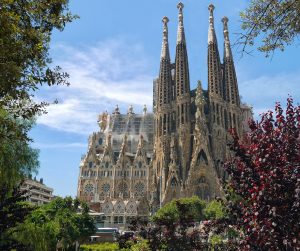How can you skip those long queues at the box office at the Sagrada Familia in Barcelona?

The Sagrada Familia is one of the most famous and popular tourist attractions in Barcelona. This impressive church, the grandeur of the work of the Catalan architect, Gaudi, is proudly displayed in the centre of the city and attracts millions of visitors every year.
In this impressive building, you can find a museum that reviews the history of the Sagrada Familia from the beginning of its construction to the present day, and presents various drawings and models related to its design. Many tourists also choose to climb to the top of the towers of the church, to be impressed by the spectacular view of Barcelona.
This is one of the busiest attractions in Barcelona and if you do not want to spend long hours waiting in the queue at the ticket office, it is highly recommended that you book your tickets online, in advance, thus bypassing the awfully long waiting time.
There are many online sites that offer tickets to the Sagrada Familia, allowing you to bypass other tourists who are stuck waiting in the lengthy queues. The "Tiqets" website, for example, is considered one of the best by UK travellers. It offers online tickets to the Sagrada Familia and also offers the option of downloading tickets directly to your mobile phone without having to print them.
What do you need to know before buying tickets to the Sagrada Familia?
- * Make sure your ticket includes direct access to the Sagrada Familia without queueing at the box office (Skip the Line).
- * Many tourists choose to buy extra tickets that include access to one of the two towers.
- * Due to high demand, you should book tickets far in advance, otherwise you may find that there are no tickets left.
- * Digital tickets are the best! With this type of ticket, you don't even need to print it, just show and scan your smartphone with your digital ticket at the entrance, and that’s all there is to it.
The "Temple Expiatori de la Sagrada Família" is a large unfinished Roman Catholic church in Barcelona. Designed by Catalan architect Antoni Gaudí (1852–1926), his work on the building is part of a UNESCO World Heritage Site. In November 2010, Pope Benedict XVI consecrated the church and proclaimed it a minor basilica.
In 1882, construction of Sagrada Família began under architect Francisco de Paula del Villar. In 1883, when Villar resigned, Gaudí took over as chief architect, transforming the project with his architectural and engineering style, combining Gothic and curvilinear Art Nouveau forms. Gaudí devoted the remainder of his life to the project, and he is buried in the crypt. At the time of his death in 1926, less than a quarter of the project was complete
